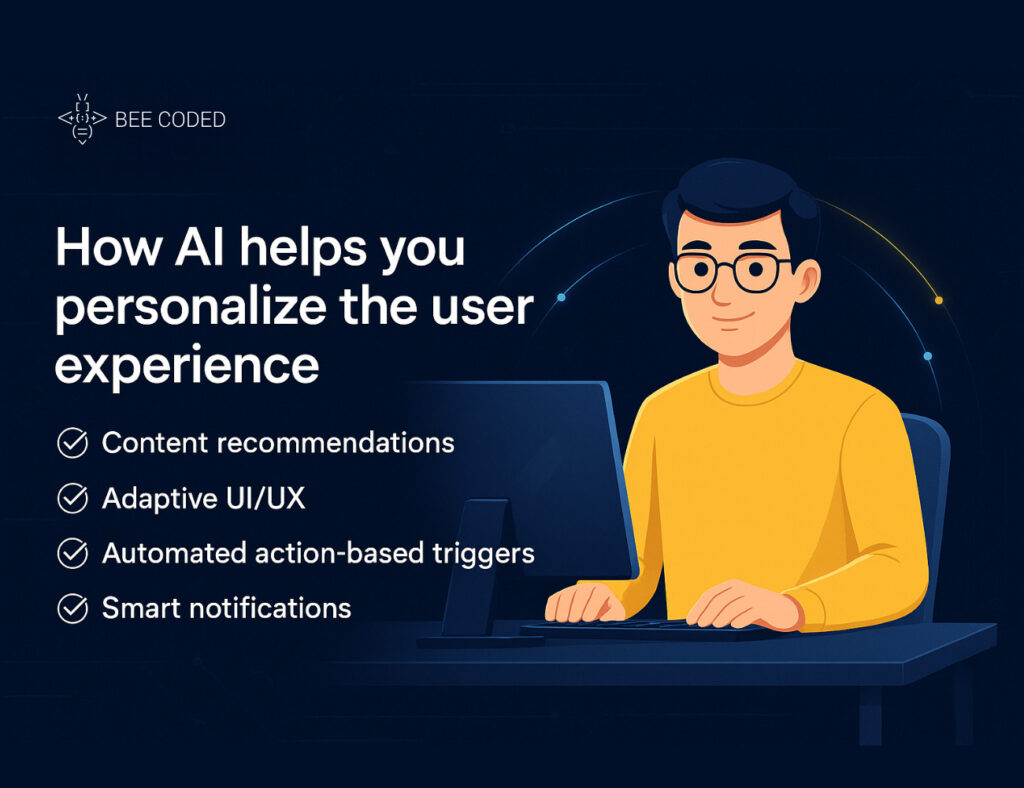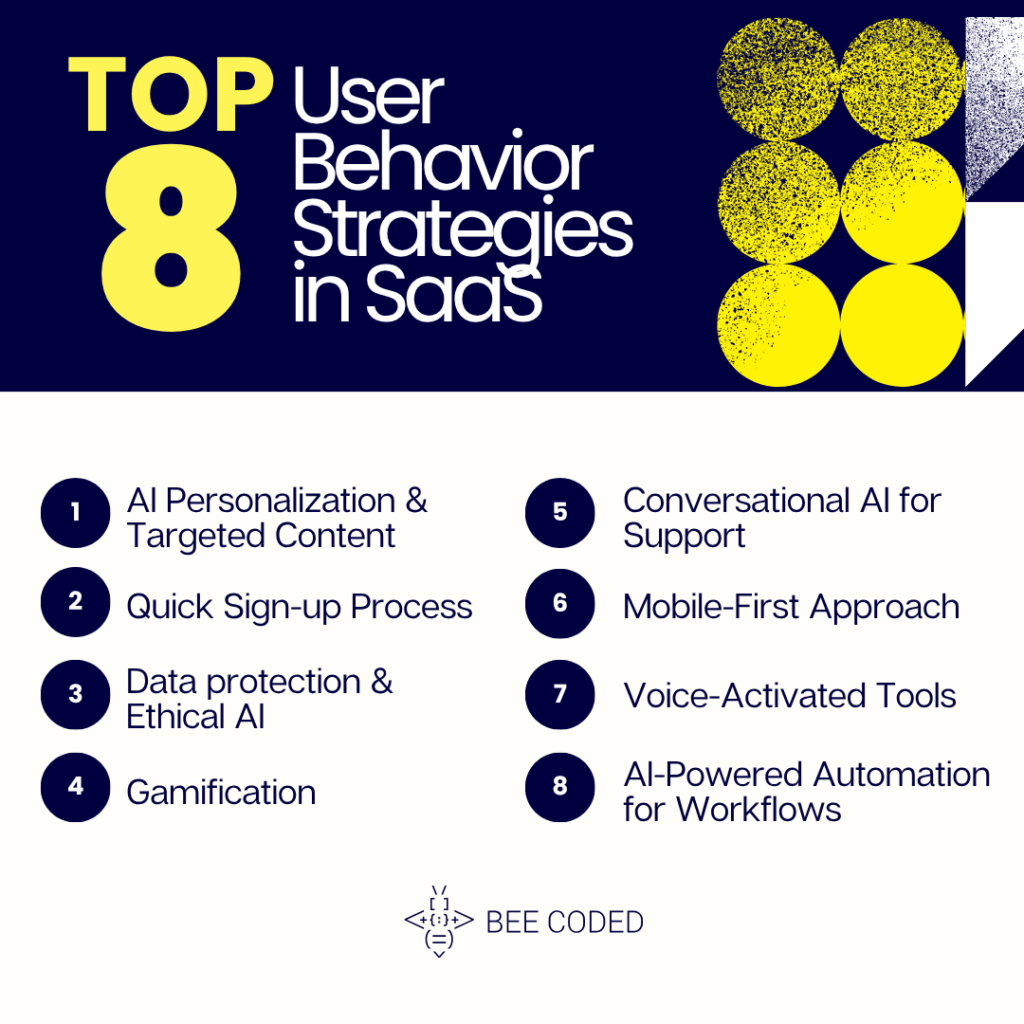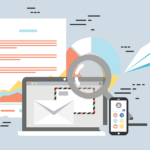Want to learn about the most effective user behavior strategies to boost engagement in your SaaS app? You’re in the right place. In this article, we’ll talk about how to use modern technologies to anticipate and personalize user interaction. We’ll especially focus on AI, because, let’s face it, it’s the future of the SaaS industry. Let’s begin!

Predictive user behavior with AI
According to a Gartner report, by 2026, 80% of companies will already be integrated with AI technologies. There are several AI tools already operating in the SaaS industry, and when it comes to user behavior strategies, it’s important to understand the following concepts:
1. Predictive analytics
Predictive analytics means analyzing historical data to anticipate future behavior. In other words, instead of reacting to what a user does, you adapt your app based on what they’re likely to do.
Let’s take an email marketing SaaS platform as an example. It can use predictive analytics to anticipate when a user is about to deactivate their account and automatically trigger an email with a personalized offer to retain them.
2. Machine learning
Machine learning is the core tech behind predictive analytics. It learns from user behavior and constantly adjusts engagement strategies. For instance, if you have a project management app, ML can detect usage patterns and automatically suggest relevant features tailored to each individual user.
3. AI personalization
Every SaaS user has different needs and intentions. A personalized experience helps users find what they need faster, and more importantly, it makes them come back. According to encharge.io, personalization can increase revenue by up to 40%. AI can personalize the experience through:
– content recommendations
– adaptive UI/UX
– automated action-based triggers
– smart notifications.

A real-world example is Netflix, which uses an AI recommendation engine that analyzes:
– what you’ve watched,
– how long you watched it,
– what you stopped halfway through.
User behavior strategies that boost engagement
Personalization & targeted content
Psychologically speaking, people react better to content that feels made for them. AI makes this easy by segmenting your users based on behavior, industry, activity level, preferences etc. Then you can deliver messages, offers and features that are relevant to each segment.
Quick sign-up process
A long onboarding process is a fast track to user drop-off. Users expect a smooth sign-up, no long forms or complicated steps. So keep it simple:
– offer single sign-on options
– allow one-click email registration
– send a personalized welcome email—remember that personalization should happen at every level, including onboarding.
Data protection & ethical AI
Users return to SaaS products they trust. So build that trust with strong security processes and transparent communication. Make sure your SaaS app complies with:
– GDPR (EU data protection)
– HIPAA (for healthcare apps).
Artificial Intelligence, while powerful, brings ethical concerns with it, especially around privacy. Who protects the data AI uses? users may ask. That’s why you need:
– transparency about what data you collect
– a clear consent system
– options for users to access and delete their data.
Gamification
Gamification means applying game mechanics (rewards, levels, badges) in a non-game context, in order to encourage a certain behavior (in this context, the engagement within the app). It works on the reward principle, meaning that the more positive feedback users get, the more they want to return, increasing engagement rates.
A great example here is Duolingo. The platform offers XP, streaks, levels, and lots of gamified elements. They recently launched Duolingo Max, powered by AI, with two new features:
– Explain My Answer – personalized feedback on right or wrong answers
– Roleplay – simulated conversations with characters, mimicking real-life scenarios.
Conversational AI for support
According to userpilot.com, 77% of customers expect instant responses. Chatbots and virtual assistants can answer questions, guide onboarding and solve simple issues in real time.
For example, a project management SaaS could have a chatbot that:
– offers guided tours
– answers feature-related questions
– redirects users to relevant resources.
Mobile-first approach
Most users access apps from their phones. That means:
– the UI must be optimized for small screens
– loading times should be minimal
– the key features should be easy to access
– focus on mobile app development.
So, build and test your app mobile-first, then scale it to desktop.
Voice-activated tools
Voice interfaces are gaining popularity because they’re faster than text input and they can become a clear differentiator for your SaaS app. Thus, consider integrating:
– voice search for app navigation
– voice notes to add tasks or messages
– voice commands for quick actions (“Create an invoice for client X”)
AI-powered automation for workflows
Automation smooths out the user experience and removes repetitive tasks. Let’s take a few examples from different industries:
- Finance – automatic invoicing and reconciliation
- HR – onboarding, time tracking, documentation
- Supply Chain – real-time inventory and delivery updates.

Discover SaaS Development Services Focused on User Behavior
If you want to build a competitive SaaS app, choose a partner that has a great understanding of:
– modern AI technologies
– effective user behavior strategies
– ethics and data protection principles
– the psychology of the digital user.










Leave a Reply